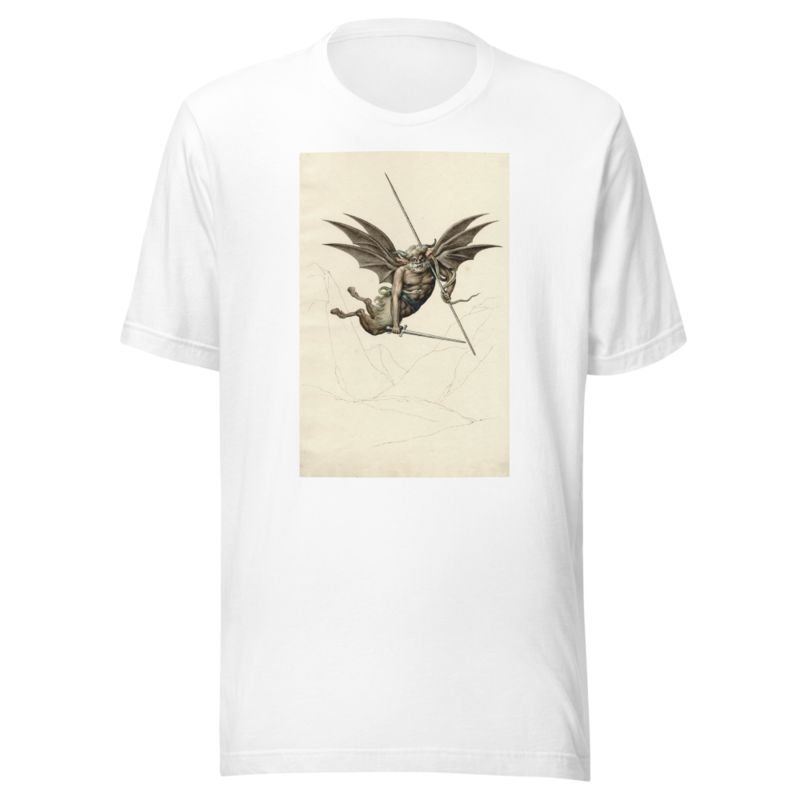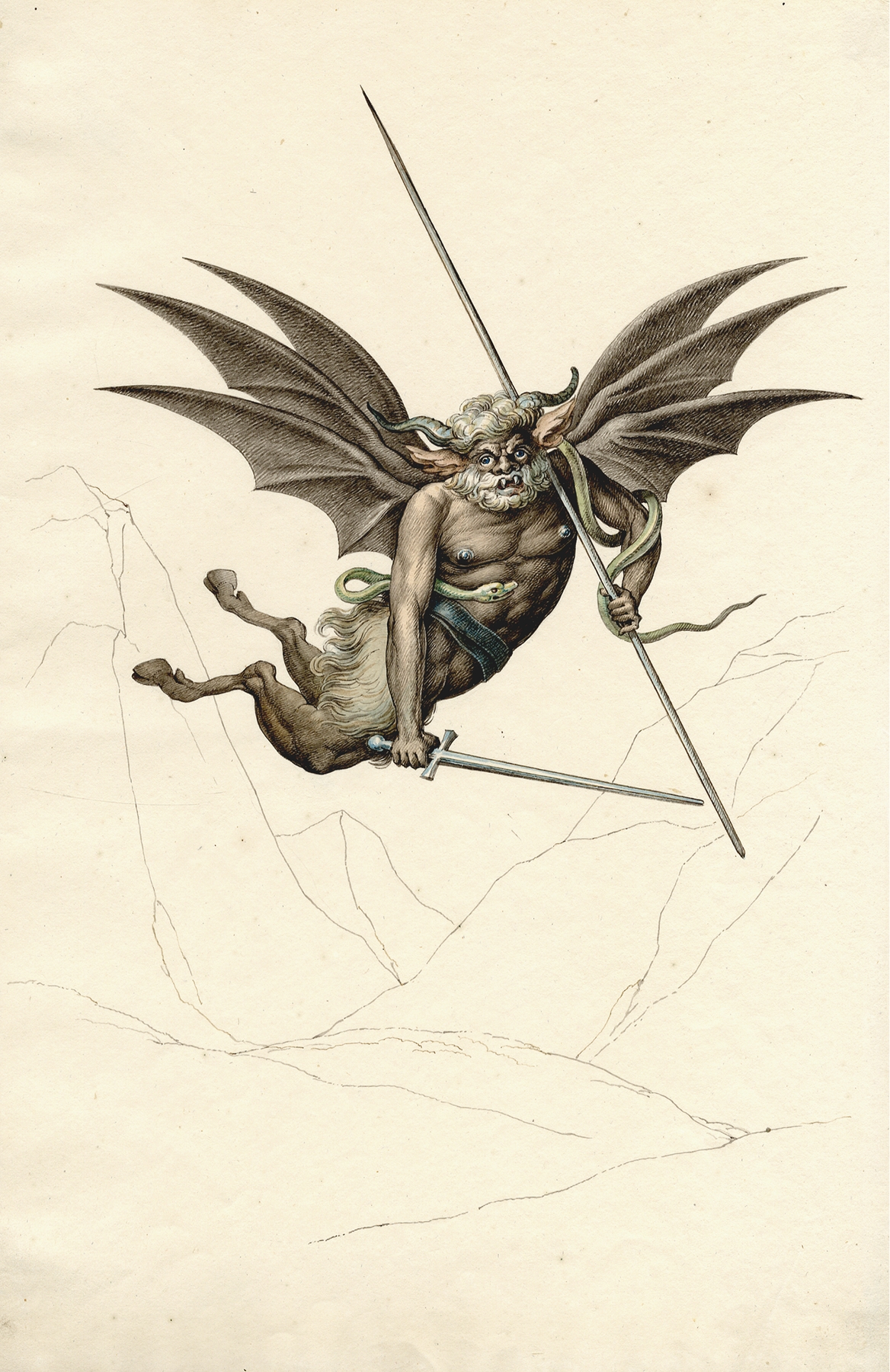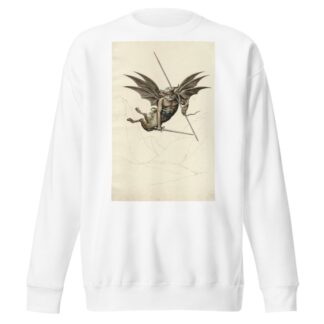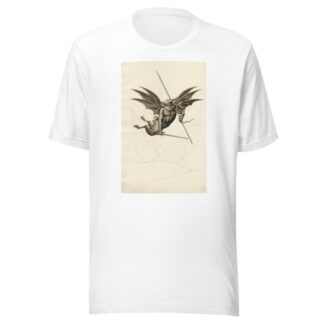Description
Winged devil, from a fresco in the Camposanto at Pisa by David Humbert de Superville printed on a T-Shirt
About the T-Shirt
Regular fit
Standard length, the fabric easily gives into movement
Casual wear
A classic, everyday option loved by our customers
Side-seamed
Constructed by sewing two parts together, creating a fitted look
The Unisex Staple T-Shirt feels soft and light with just the right amount of stretch. It’s comfortable and flattering for all. We can’t compliment this shirt enough–it’s one of our crowd favorites, and it’s sure to be your next favorite too!
- Solid colors are 100% Airlume combed and ring-spun cotton
- Ash color is 99% combed and ring-spun cotton, 1% polyester
- Heather colors are 52% combed and ring-spun cotton, 48% polyester
- Athletic and Black Heather are 90% combed and ring-spun cotton, 10% polyester
- Heather Prism colors are 99% combed and ring-spun cotton, 1% polyester
- Fabric weight: 4.2 oz./yd.² (142 g/m²)
- Pre-shrunk fabric
- 30 singles
- Side-seamed construction
- Tear-away label
- Shoulder-to-shoulder taping
- Blank product sourced from Nicaragua, Mexico, Honduras, or the US
David Humbert de Superville (1770-1849)
David Pierre Giottino Humbert de Superville was a Dutch artist and art scholar. He was a draughtsman, lithographer, etcher, and portrait painter, and also wrote treatises on art, including the influential work Essai sur les signes inconditionnels dans l’art (Leiden, 1827). His 1815 painting of the jurist and statesman Johan Melchior Kemper is now part of the collection of the Rijksmuseum in Amsterdam.
His 1801 etching Allegory may have been a direct visual inspiration for Paul Gauguin’s Spirit of the Dead Watching. Although no direct connection has been made, de Superville was cited by Albert Aurier as one of the forerunners of Symbolist painting and de Superville’s book Unconditional Signs in Art (1827–32) was widely known to that group.
A portrait of Humbert de Superville uit 1848, painted by Jacobus Ludovicus Cornet, is now in the Rijksmuseum in Amsterdam. The biography David Pierre Giottin Humbert de Superville, 1770-1849 by Cornelia Magdalena de Haas was published by A.W. Sijthoff in Leiden in 1941. In 1988, an exhibition of Humbert de Superville’s work was held at the Musée Fabre in Montpellier (France) and at the Institut Néerlandais in Paris.
D.P.G. Humbert de Superville was a son of Jean Humbert, a Dutch painter of Swiss and French extraction. His brother, military engineer Jean Emile Humbert, is credited with rediscovering the lost city of Carthage. Humbert de Superville’s assumed name of Giottino was originally a nickname he was given in Italy because his work showed similarities with the Italian master Giotto. He also took the last name de Superville after his grandmother Emilie de Superville, daughter of the eminent French Calvinist theologian Daniel de Superville, who had fled to the Dutch republic in 1685.
He left the Netherlands for Rome from 1789 and lived there until 1800, when the Papal State was restored and Humbert de Superville was forced to leave the city because he had supported the 1798 occupation of Rome by French revolutionary troops. In 1812 he settled in the Dutch town of Leiden and became a lecturer at the University of Leiden. He served as head of the Leiden drawing academy Ars Aemula Naturae (1814–1823) and as first director of the Leiden cabinet of prints, drawings and plaster statues (1825–1849).
Humbert de Superville married Elisabeth Paradijs in 1816. They had two sons, one of whom died at a very young age; the other son died of typhoid at the age of 24.






Reviews
There are no reviews yet.